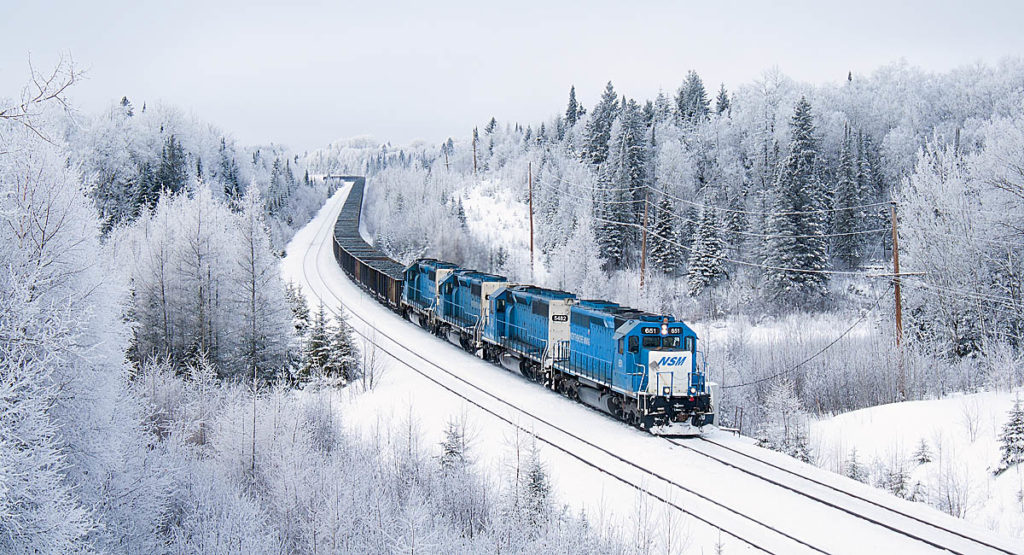
Northshore Mining SD40 No. 651 leads a quartet of locomotives and iron ore near Toimi, Minn., in December 2010. Cold temperatures that make metal contract and ice expand are just the start of problems in winter railroading. Max Medlin “People and metal do not like cold weather,” says Mike Smith, vice president of network operations […]
Read More…
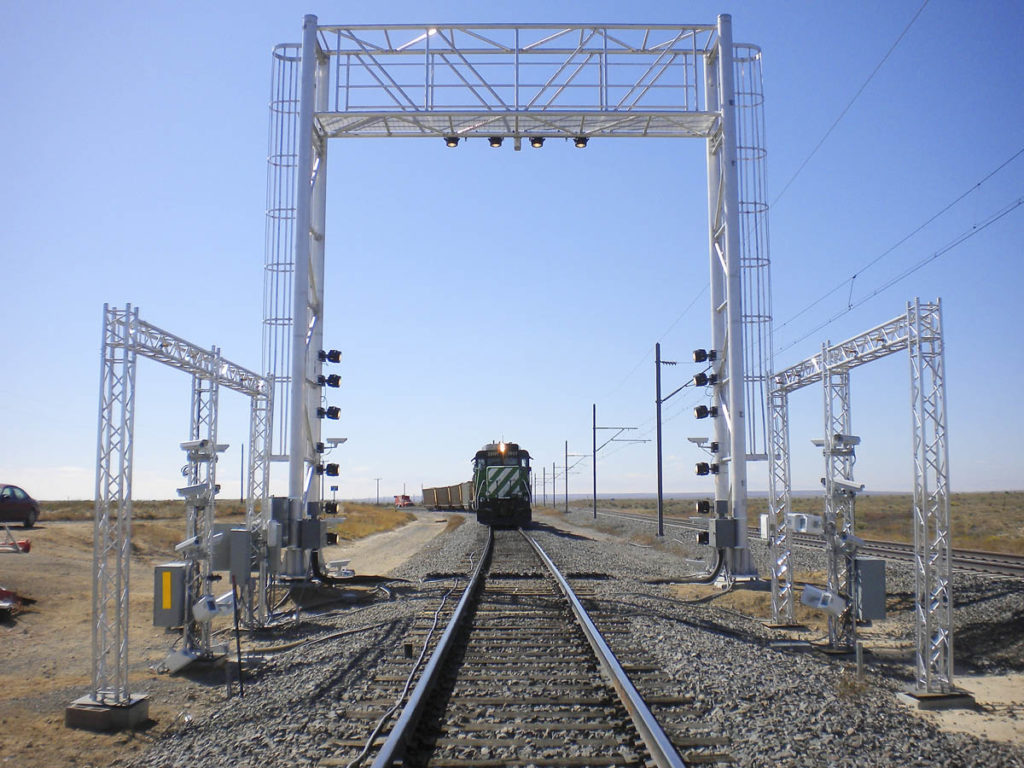
Beena Vision System’s TrainView inspects an entire freight train at speeds up to 60 mph at a testing facility in Pueblo, Colo. Beena Vision Systems Inc., Transportation Technology Center Inc. On BNSF Railway’s main line through Cajon Pass in California, poles and sensors pop up along the side of an S-curve. As a group, the […]
Read More…
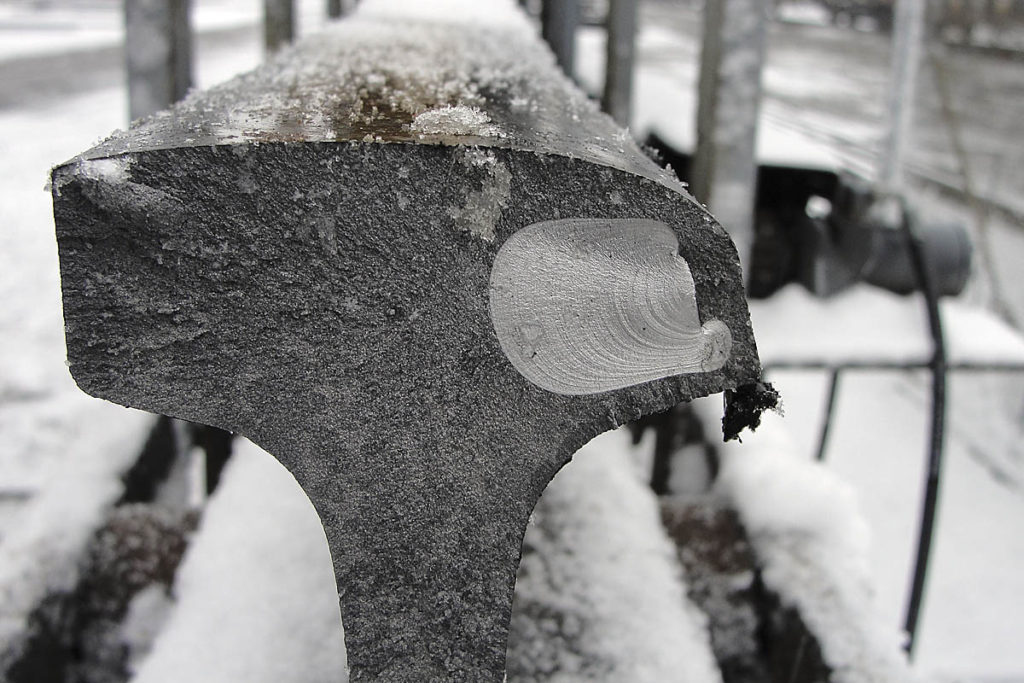
The manufacture and maintenance of rail is as old as railroading — and so are broken rails. Though today’s rail is much harder, stronger, and of higher quality than rail made even 40 years ago, railroads and metallurgists have just recently begun to understand why rails still are breaking. As railroads installed new rail in […]
Read More…
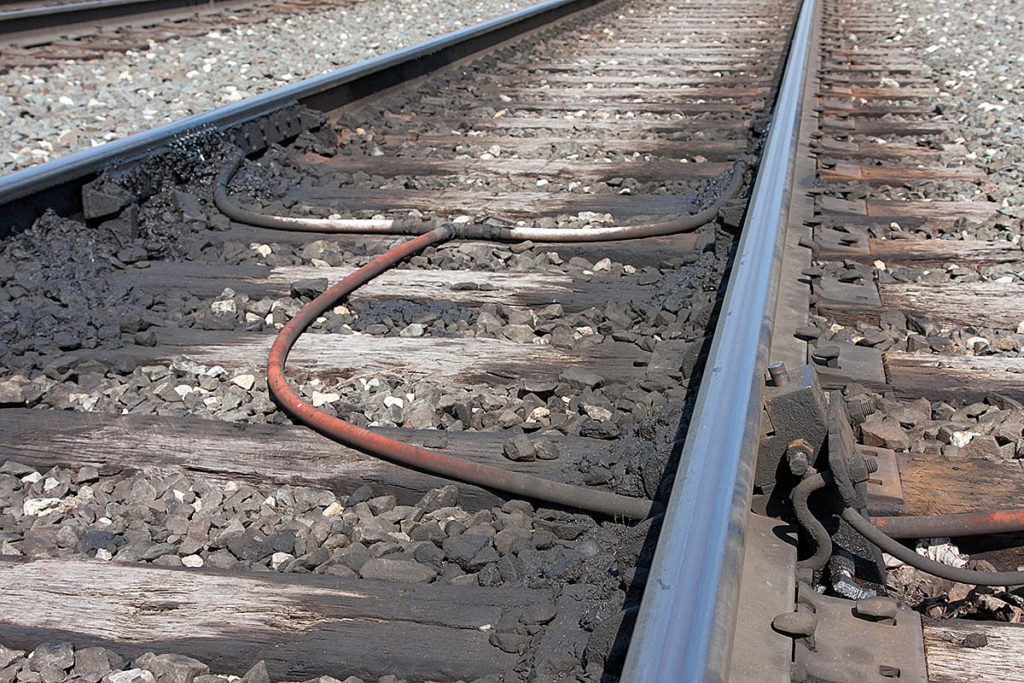
Hydraulic flange greasers are activated when a wheel rolls over an actuator, as shown on CSX’s Indianapolis Line Subdivision. Two photos, Eric Powell Forgive the pun, but it’s a slippery slope that railroads have to deal with, in terms of rail and flange lubrication. Too much or too little grease on the track can cause […]
Read More…
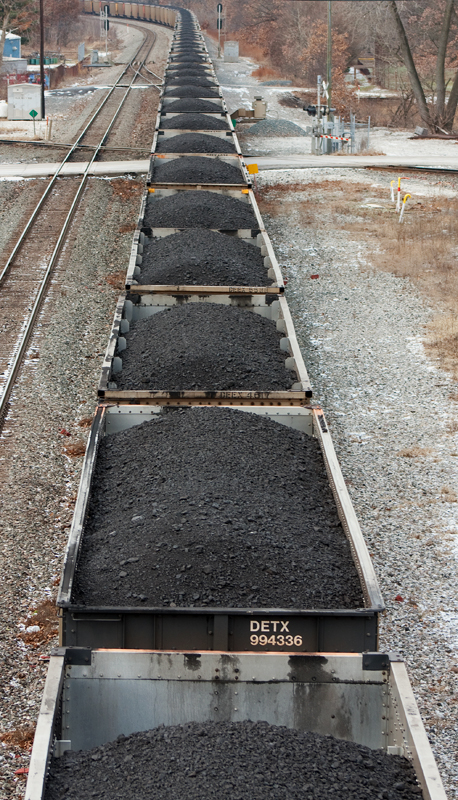
BNSF 9801 led this coal train through Willow Creek, Ind., on Jan. 1, 2009. DETX 994336 is one of 5,700 coal cars owned by Detroit Edison Co. Kathi Kube It’s easy enough to identify reporting marks for Class I railroads, as well as a multitude of short lines and regionals, but the reporting marks on […]
Read More…
It was December 2005 when I wrote the rough draft of my story on using GPS (Global Positioning Satellite) to help when chasing trains in unfamiliar lands. Between that time and the time the article appeared in the July 2006 issue of Trains, I kept an eye on the advertisements from national electronic retailers (Best […]
Read More…
Say you’re an engineer running a multi-unit diesel consist on a freight train. During the trip, it becomes necessary to remove the lead unit because of a grade-crossing entanglement, some mechanical problem, or to give to another (underpowered) train. No problem – the second unit can lead as well as the first, so you resume […]
Read More…
Who controls the movement of the trains after the tower is closed? The train dispatcher is the most common heir to the towerman’s duties, but not always. The type of control used depends on the nature and density of the rail traffic handled at the location. Ways to preventing trains from colliding when railroad lines […]
Read More…
An Amtrak train en route from Milwaukee to Chicago on Canadian Pacific’s double-track main line hurtles by a metal cabin and some trackside apparatus. Over the radio, a stilted voice intones “CP detector, milepost five seven point six. Main track: two. Total axles: one six. No defects. Temperature: five three degrees. Detector out.” A moment […]
Read More…
The Association of American Railroads has 11 basic classification of freight cars. Most of the major classes have subclasses, and you’ll find them by clicking on the links below. The following was taken from the July 2002 Official Railway Equipment Register, published by Commonwealth Business Media. The National Model Railroad Association also offers reprints of […]
Read More…
Conrail. Milwaukee Road. Santa Fe. Rail Box. Anyone who watches freight trains is familiar with these and other names blazoned across the sides of freight cars. But that’s just advertising, which some companies omit for economy’s sake. And if a car changes hands, its new owner may not even bother to paint out the old […]
Read More…
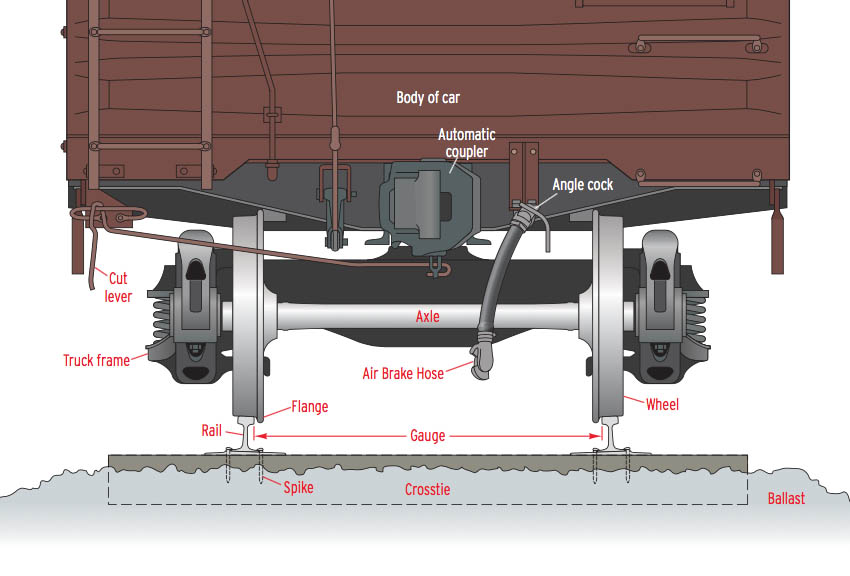
Car trucks and carbodies Do you remember running boards and full-height ladders on box cars? They are known in the railway supply trade as freight-car components, and while running boards and full-height ladders have followed the telegraph key and the steam locomotive into railroad technological history, other components remain as key elements of the freight […]
Read More…






